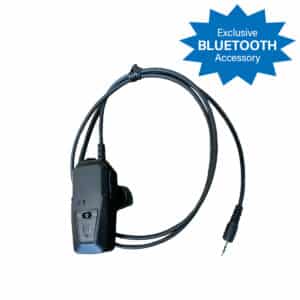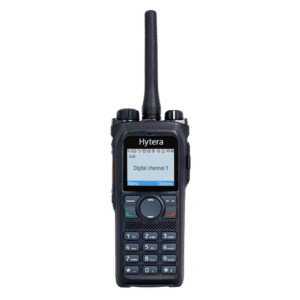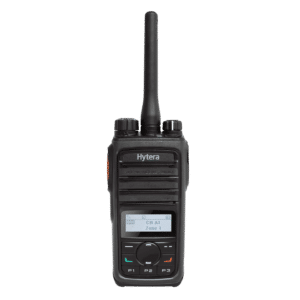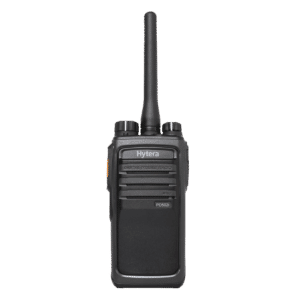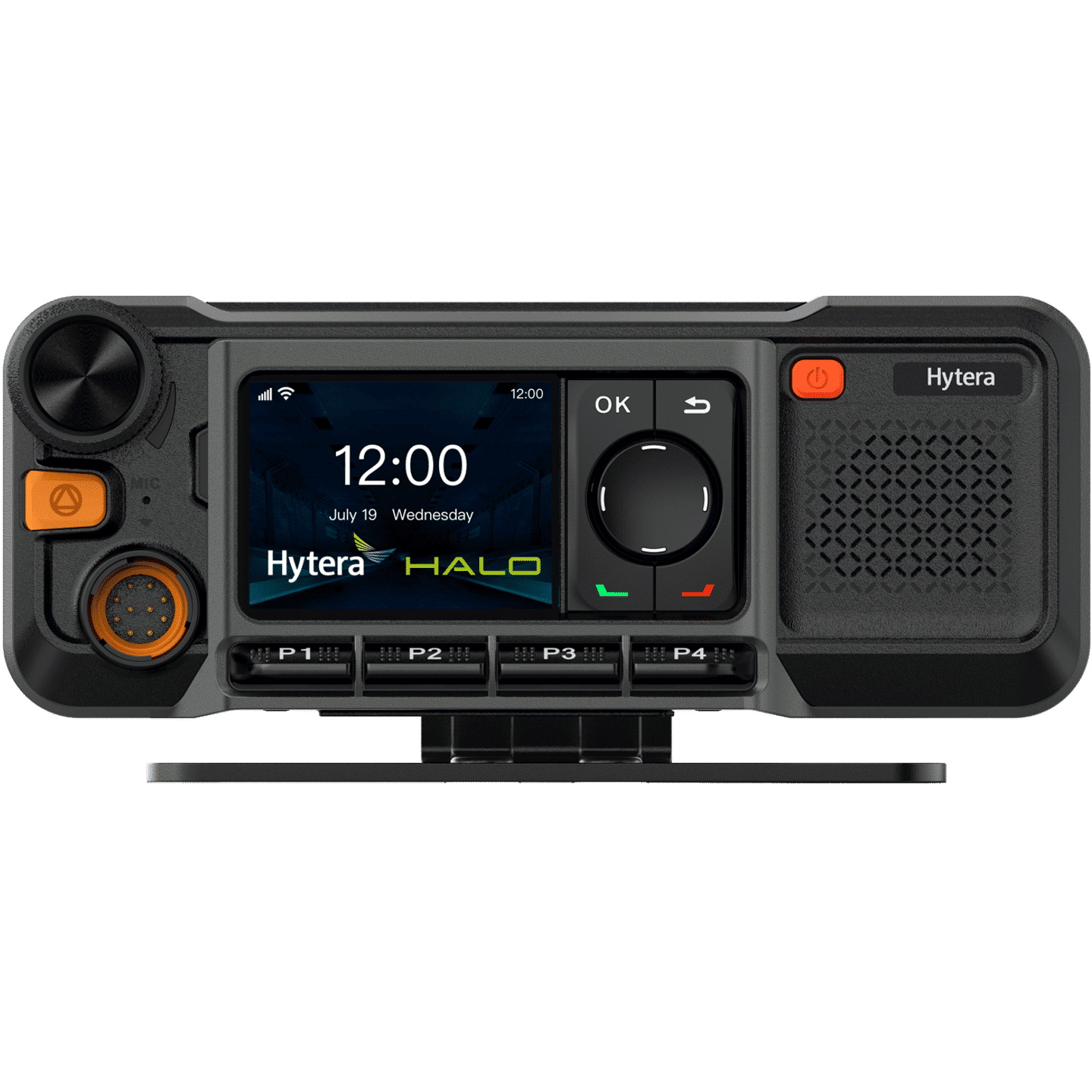1. Introduction: The Evolution of Stage Monitoring
The journey from traditional stage monitoring to modern in-ear solutions represents one of the most significant technological leaps in live performance history. Before the 1990s, performers relied exclusively on wedge monitors—powerful floor-mounted speakers that projected their audio mix back at them during performances. While functional, these wedge monitors created a complex web of challenges: acoustic feedback that could pierce through performances, excessive stage volume that strained vocalists, and sound bleeding that complicated front-of-house mixing.
Enter In-Ear Monitors (IEMs), a revolutionary technology that transformed the landscape of live performance. First gaining prominence in the late 1980s, IEMs offered a elegant solution to the limitations of traditional monitoring. By delivering precisely mixed audio directly to the performer’s ears, these sophisticated devices eliminated the need for loud stage wedges while providing unprecedented clarity and control.
The impact was immediate and profound. Early adopters like Elton John and Van Halen discovered that IEMs not only protected their hearing but also enhanced their performance capabilities. Vocalists could finally hear themselves with crystal clarity, even in the most demanding acoustic environments. Guitarists were free to roam the stage without losing their monitor mix. For the first time, performers could experience studio-quality sound while maintaining the energy and mobility of live performance.
The technology’s evolution has been equally impressive. Modern IEMs have transcended their original role as simple monitoring devices to become sophisticated audio systems. According to a report by Future Market Insights, from 2015 to 2021, the market for in-ear monitors (IEMs) expanded at a rate of 6.3%. The same report indicates that the IEM market was valued at US$ 344.7 Million in 2022 and is projected to reach US$ 749.7 Million by 2032. They expect the global IEM market to grow at a Compound Annual Growth Rate (CAGR) of 9.0% from 2022 to 2032. This growth reflects not just technological advancement but a fundamental shift in how musicians approach live sound.
Consider the case of modern pop productions, where artists like Ariana Grande seamlessly integrate complex choreography with pitch-perfect vocal delivery. Her use of custom-molded IEMs exemplifies how the technology enables performers to push creative boundaries while maintaining technical excellence. Even in traditional settings, such as symphony orchestras, IEMs have found their place, helping musicians achieve perfect blend and balance in amplified performances.
The rise of IEMs also mirrors broader trends in audio technology: the move toward personalization, precision, and portability. Where traditional monitoring systems offered a one-size-fits-all approach, IEMs provide tailored solutions for each performer’s unique needs. This shift has democratized professional-grade monitoring, making high-quality sound accessible to independent artists and emerging performers.
Today’s IEM market spans a spectrum from entry-level universal fits to sophisticated custom-molded systems with multiple drivers. This range of options has helped establish IEMs as essential tools across all levels of live performance, from local venues to international tours. The technology continues to evolve, incorporating wireless innovations, digital signal processing, and even biometric monitoring capabilities, suggesting that the next chapter in stage monitoring will be even more revolutionary than the last.
2. Technical Foundations and Evolution
The technological heart of In-Ear Monitors (IEMs) represents a masterpiece of acoustic engineering, where microscopic components deliver studio-quality sound directly to the ear canal. Understanding these technical foundations reveals not just how IEMs work, but why they’ve become indispensable tools for modern performers.
2.1 Core Driver Technologies
Dynamic Drivers: The Power Players
Dynamic drivers, the earliest and most widely used driver type, are celebrated for their robust bass response and durability. At their simplest, dynamic drivers operate like miniature loudspeakers, using a voice coil-driven diaphragm suspended within a magnetic field. Their strength lies in moving substantial amounts of air, creating the powerful, visceral bass response that drums and bass instruments demand. Modern dynamic drivers have evolved significantly, incorporating materials like beryllium and graphene-coated diaphragms to achieve unprecedented clarity while maintaining their characteristic warmth and impact. However, their performance in higher frequencies can sometimes lack the clarity required for intricate musical detail.
Key advantages:
- Exceptional bass response and dynamic range
- Natural, powerful sound reproduction
- Excellent durability and reliability
- Cost-effective manufacturing
Balanced Armature (BA) Drivers: Precision Unlimited
Originally engineered for hearing aids, balanced armature drivers revolutionized IEM design through their remarkable efficiency and precision. These drivers employ a tiny armature that pivots between magnetic poles, offering extraordinary detail and speed in sound reproduction. Their compact size enables multiple drivers to operate in harmony within a single earpiece, each handling specific frequency ranges with surgical precision.
This specialization has made them a favorite among vocalists and guitarists seeking clarity and separation in live mixes.
Distinctive features:
- Exceptional detail in mid and high frequencies
- Minimal power requirements
- Compact form factor enabling multiple-driver arrays
- Superior frequency separation
Planar Magnetic Innovation
The newest entrant in the IEM driver landscape, planar magnetic technology, represents the cutting edge of audio reproduction. By suspending an ultra-thin diaphragm embedded with conductive traces between precisely arranged magnetic arrays, planar drivers achieve remarkable accuracy across the entire frequency spectrum with minimal distortion. Though traditionally found in over-ear headphones due to their size and power requirements, innovations in miniaturization have made planar drivers increasingly viable in IEMs, catering to audiophiles and critical listeners.
Notable characteristics:
- Extraordinarily low distortion levels
- Lightning-fast transient response
- Linear frequency response
- Exceptional spatial reproduction
Hybrid / Multi-Driver Innovation
The introduction of multi-driver configurations in the 1990s marked a watershed moment in IEM development. Pioneered by companies like Shure and Ultimate Ears, these systems combined different driver types to leverage their respective strengths. Modern hybrid configurations might employ:
- Dynamic driver for low frequencies (20Hz-200Hz)
- Mid-range BA drivers (200Hz-2kHz)
- High-frequency BA drivers (2kHz-20kHz)
- Optional super-tweeter for extended highs
Indeed, hybrid configurations have emerged as a dominant trend in high-end IEMs. For example, pairing a dynamic driver for low-end punch with multiple BA drivers for mid and high frequencies creates a balanced and versatile sound signature.
Crossover Systems: The Silent Orchestrators
Advanced crossover systems, which allocate specific frequency ranges to individual drivers, are critical in ensuring these hybrids deliver a cohesive auditory experience without phase issues or frequency overlaps. Thus, advanced crossover networks serve as the conductors of this microscopic orchestra, ensuring each driver performs its role perfectly. Modern crossovers employ sophisticated techniques :
- Phase-coherent filter designs
- Time-aligned signal paths
- Impedance matching circuits
- Frequency-specific damping
Comparative Chart of Driver Technologies in IEMs:
| Feature | Dynamic Drivers | Balanced Armature (BA) Drivers | Planar Magnetic Drivers |
| Primary Strength | Strong bass response | Precision in mids and highs | Wide frequency response and low distortion |
| Sound Signature | Warm, impactful, and natural | Highly detailed and articulate | Flat, accurate, and immersive |
| Size | Larger compared to BA | Very small | Larger but improving with miniaturization |
| Efficiency | High; works well with low power | Moderate; requires more tuning | Lower; requires more power |
| Cost | Lower cost | Moderate to high cost | High cost |
| Common Applications | Bass-heavy genres, general-purpose IEMs | Professional IEMs, vocal clarity | Audiophile IEMs, critical listening |
| Notable Weakness | Can lack detail in mids and highs | Bass response can feel weak or artificial | Power-hungry and heavier |
Historical Development: Milestones in IEM Evolution
The evolution of IEMs reflects a series of technical breakthroughs. Shure’s introduction of the first multi-driver IEMs in the 1990s marked a turning point, enabling greater fidelity and customized sound profiles. Westone and Ultimate Ears followed suit, pushing boundaries with custom-molded designs and multi-driver innovations tailored to professional musicians. Ultimate Ears, for instance, pioneered the use of up to six balanced armature drivers per earpiece, a milestone that set a new benchmark for clarity and precision.
Wireless Technologies
The advent of wireless IEM systems in the early 2000s further expanded their usability. By eliminating the need for cumbersome cables, wireless IEMs gave performers greater freedom of movement on stage while maintaining a stable and high-quality audio feed. Companies like Sennheiser and Shure led the charge in developing reliable wireless transmission protocols, ensuring minimal latency and interference even in challenging live environments.
The wireless revolution in IEMs hasn’t just cut the cord—it’s opened new possibilities for performance and interaction. Current wireless systems offer:
- Ultra-low latency (<1ms)
- 24-bit/96kHz audio transmission
- Advanced digital signal processing
- Adaptive frequency hopping
- Extended range (300+ feet line of sight)
Recent Innovations: Pushing the Limits of Sound
The drive for higher fidelity and greater efficiency continues to inspire innovation in IEM driver design. Miniaturization has enabled manufacturers to pack more drivers into smaller shells, allowing for ultra-portable designs without sacrificing sound quality. Modern BA drivers, for instance, now feature specialized tuning ports to enhance airflow, resulting in richer and more dynamic sound.
Efficiency improvements in planar magnetic drivers have made them lighter and more power-efficient, bringing this premium technology closer to mainstream adoption.
Material Science Advances
The pursuit of perfect sound has driven innovations in materials:
- Nano-scale diaphragm coatings for improved transient response
- Advanced polymer compounds for reduced resonance
- Biocompatible materials for extended wear comfort
- Shape-memory alloys for improved fit and seal
These novel driver materials, such as beryllium diaphragms and graphene-coated membranes, are pushing the boundaries of transient response and distortion reduction.
Digital Signal Processing Integration
Modern IEMs increasingly incorporate digital signal processing (DSP) capabilities, enabling:
- Real-time frequency response adjustment
- Dynamic range optimization
- Virtual acoustics modeling
- Adaptive noise cancellation
- Personalized sound profiles
Future Directions
The technical evolution of IEMs continues at a rapid pace, with several promising developments on the horizon:
- AI-driven sound optimization
- Integrated biometric monitoring
- Advanced acoustic modeling
- Enhanced wireless protocols
- Sustainable material innovations
Perhaps the most interesting are those manufacturers exploring adaptive systems that adjust the IEM’s response in real time based on the listening environment, offering a level of personalization never before seen in the industry.
This constant innovation ensures that IEMs will continue to evolve, providing ever-better solutions for performers and audio professionals while pushing the boundaries of what’s possible in personal audio monitoring.
3. Custom Fitting: The Science of Perfect Fit
The science of custom fitting has revolutionized the In-Ear Monitor (IEM) landscape, creating a synergy between cutting-edge technology and personalized comfort. A well-fitted IEM doesn’t just enhance comfort—it ensures superior sound quality, maximized isolation, and reliable performance in dynamic environments. The journey toward achieving the perfect fit is marked by innovations in fitting technologies, materials, and manufacturing processes.
Modern Fitting Technologies
Traditionally, custom IEMs relied on silicone impression molds taken by audiologists. While effective, this method was time-consuming and subject to inaccuracies from human error during the molding or scanning process. The advent of 3D scanning technology has transformed this step, offering unparalleled precision. Modern scanners capture the contours of the ear canal in minute detail, translating these measurements into digital 3D models that manufacturers use to design earpieces tailored to the user.
Digital modeling further enhances the process, allowing engineers to simulate fit and predict acoustic performance before production. By testing various designs virtually, manufacturers can optimize both comfort and sound quality, reducing the likelihood of costly revisions. This combination of 3D scanning and digital modeling ensures that the final product fits like a second skin while delivering a consistent audio experience.
Material Innovations
The choice of materials plays a pivotal role in the comfort, durability, and safety of custom IEMs. Medical-grade materials, such as acrylic and soft silicone, dominate the industry, ensuring hypoallergenic properties and long-term wearability. For added comfort, many manufacturers use dual-layer designs—hard acrylic for the outer shell’s structural integrity and soft silicone for the portion that interfaces with the ear canal. These materials not only improve comfort but also enhance noise isolation, a critical feature for musicians performing in high-decibel environments.
Recent advancements have also seen the introduction of temperature-sensitive materials that adapt slightly to the wearer’s body heat, providing an even more secure and comfortable fit. With user safety in mind, many manufacturers incorporate antibacterial coatings to maintain hygiene, particularly for performers who wear their IEMs for extended periods.
Manufacturing Process
Once the digital model is finalized, the manufacturing process harnesses 3D printing to bring the design to life. This technology has revolutionized custom IEM production, enabling intricate acoustic designs, such as custom sound bores and venting systems, that were previously unachievable with traditional methods. 3D printing also significantly accelerates production timelines, reducing the waiting period for artists who need their equipment quickly.
Quality control remains paramount throughout the process. Manufacturers use precise measurement tools to ensure that every custom IEM meets stringent standards for fit and acoustic performance. Some brands, such as Ultimate Ears, even incorporate modular designs, allowing users to replace specific components, like cables or faceplates, without compromising the overall fit or sound quality. This modularity adds to the longevity and adaptability of the product, making it an investment rather than a disposable accessory.
Benefits of Custom Fitting
The advantages of custom IEMs extend far beyond comfort. A tailored fit ensures superior acoustic isolation, allowing musicians to hear only what they need during live performances, free from external noise interference. This isolation not only enhances clarity but also protects hearing by enabling lower monitor volumes, a crucial consideration in preserving long-term ear health.
Custom fittings also provide stability and reliability, ensuring that IEMs stay securely in place during dynamic performances, regardless of movement. Whether it’s a lead vocalist jumping across the stage or a drummer contorting through complex beats, custom IEMs maintain consistent sound delivery, preventing distractions and performance disruptions.
Moreover, the consistent placement of custom-fitted IEMs ensures that the sound signature remains stable every time they’re worn. Unlike universal IEMs, which can shift position and alter the perceived sound, custom models deliver a dependable auditory experience, crucial for professionals who demand precision in every performance.
4. High-Fidelity Sound Engineering
The pursuit of high-fidelity sound has long been a driving force in In-Ear Monitor (IEM) development, shaping how artists, engineers, and enthusiasts interact with their music. This process involves a combination of advanced driver configurations, meticulous acoustic design, and customizable features, all aimed at delivering clarity, balance, and a rich listening experience.
Sound Reproduction Technologies
At the core of high-fidelity sound in IEMs lies the choice and configuration of drivers. As we have seen, Balanced Armature (BA) drivers excel in providing clarity and separation, making them ideal for intricate mid and high frequencies, while dynamic drivers handle bass with powerful depth and resonance. Hybrid configurations, combining dynamic drivers and multiple BA drivers, have become a staple for achieving a full-spectrum response, blending the best qualities of both.
Driver tuning is another crucial element. Manufacturers often tune their IEMs to achieve a specific sound signature, whether it’s a neutral, studio-grade response for engineers or a more colored sound tailored for bass enthusiasts. This tuning is critical to ensure balanced frequency response, preventing any frequency band from overpowering the mix.
Phase coherence, or the alignment of sound waves from multiple drivers, is equally important. Poor phase alignment can result in a muddy or disjointed soundstage, undermining the spatial accuracy crucial for live performances and studio monitoring. Advanced crossover systems, which carefully divide frequencies among drivers, play a pivotal role in maintaining phase coherence and ensuring seamless sound blending.
Acoustic Design Elements
Beyond drivers, acoustic design profoundly impacts sound quality. Sound tubes, which channel audio from the drivers to the ear canal, are meticulously engineered to minimize distortion and maintain tonal integrity. These tubes often feature precision-ported designs to ensure consistent airflow, contributing to a smoother and more natural sound delivery.
Acoustic chambers within the IEM shell further enhance tonal accuracy. These chambers act as miniature concert halls, influencing resonance and depth by carefully shaping how sound waves interact before reaching the ear. Some high-end models even incorporate multi-chamber designs to fine-tune individual frequency ranges, creating a more immersive listening experience.
Advanced crossovers, implemented within these designs, go beyond simple frequency division. They address phase distortion issues by applying time-aligned filters, ensuring that all drivers deliver their assigned frequencies in harmony. This technology is particularly important in multi-driver IEMs, where improper blending can compromise the overall sound quality.
Personalization Features
Modern IEMs are increasingly incorporating user-friendly personalization features to cater to diverse preferences. Adjustable tuning filters, for example, allow users to modify the sound signature by swapping components that alter the bass, midrange, or treble emphasis. This flexibility ensures that IEMs can adapt to various genres or listening environments.
Digital sound shaping through companion apps is another exciting development. These apps enable users to fine-tune their IEMs’ frequency response via equalization presets or manual adjustments. Some even offer room calibration tools, allowing listeners to optimize their IEMs for different acoustic spaces.
For live performers, real-time adjustment capabilities are becoming indispensable. Musicians can use wireless monitoring systems linked to apps or hardware controllers to tweak their mix on the fly, ensuring they hear exactly what they need during a dynamic performance. This level of personalization not only enhances comfort but also improves confidence on stage.
5. Professional Applications and Integration
In-ear monitors (IEMs) have become indispensable tools for professional musicians and audio engineers, transforming how sound is experienced and managed in live, studio, and venue settings. Their adaptability to a variety of applications, combined with cutting-edge technology, ensures consistent performance in the most demanding scenarios.
Live Performance Scenarios
For live performers, IEMs provide unmatched flexibility and personalization, catering to the specific needs of different genres and roles. DJs, for instance, rely on IEMs tuned for bass-heavy reproduction to monitor low-end energy, ensuring their mixes resonate with the audience. Vocalists often prioritize balanced tuning with enhanced midrange clarity to stay in tune and maintain vocal dynamics amidst complex arrangements.
The integration of wireless systems further enhances IEMs’ utility in live settings, enabling unrestricted mobility for performers. Modern wireless systems, such as those by Shure and Sennheiser, boast excellent frequency stability and ultra-low latency, critical for avoiding signal dropouts or synchronization issues during live shows. However, the complex RF environments of large venues require meticulous planning to avoid interference. Backup strategies, like dual-monitoring systems, are often deployed for critical performances to ensure uninterrupted audio in the event of system failures.
For high-stakes live performances, such as festival headliners or orchestral productions, IEMs often function alongside floor monitors as part of a redundant monitoring setup. This dual approach provides performers with the confidence to deliver their best without fear of technical hiccups.
Studio Applications
In studio environments, IEMs have evolved beyond their traditional live-performance role to become essential tools for mixing, mastering, and tracking sessions. Unlike studio monitors, IEMs offer a direct and isolated sound, free from room acoustics, making them ideal for critical listening tasks. Engineers use IEMs to cross-check mixes, ensuring consistency across playback systems and environments.
During tracking sessions, artists benefit from the precision monitoring that IEMs provide. This accuracy helps them detect subtle nuances in their performance, from pitch inconsistencies to articulation. Custom-fit IEMs further enhance comfort during long recording sessions, ensuring musicians can focus on their craft without distractions.
As home studios become increasingly prevalent, IEMs serve as a practical solution for creators working in acoustically untreated spaces. Their isolation capabilities allow users to produce and monitor tracks without interference from external noise or room reflections.
Venue Considerations
IEMs are invaluable in navigating the challenges posed by varying venue acoustics. Each venue’s acoustic signature can dramatically alter the way performers hear themselves on stage. IEMs mitigate this variability by delivering a consistent, controlled monitoring environment directly to the ear, regardless of the venue’s characteristics. This consistency is especially crucial in outdoor settings or venues with reflective surfaces that can cause sound to bounce unpredictably.
Ambient passthrough systems add another layer of functionality, allowing performers to maintain situational awareness during performances. These systems let ambient noise, such as audience reactions or stage cues, be selectively mixed into the IEM feed. For ensemble performances or productions requiring intricate coordination, hear-back systems further enhance communication by enabling real-time interaction between performers and the audio team.
The role of IEMs extends beyond performers to include sound engineers, who rely on them to fine-tune live mixes and troubleshoot issues in real time. Their ability to provide precise monitoring in dynamic environments ensures that the final sound delivered to the audience meets professional standards.
Checklist for Optimizing IEMs In Live and Studio Applications:
| Category | Checklist | |||||||||||||||||||||
| General Preparation |
|
|||||||||||||||||||||
| Live Performance |
|
|||||||||||||||||||||
| Studio Application |
|
|||||||||||||||||||||
| Technical Maintenance |
|
|||||||||||||||||||||
| Wireless System Optimization |
|
|||||||||||||||||||||
| Personalization |
|
|||||||||||||||||||||
6. Future Technologies and Trends
The evolution of In-Ear Monitors (IEMs) shows no signs of slowing, with emerging technologies poised to redefine the boundaries of sound quality, usability, and sustainability. These innovations promise not only to enhance the listening experience for professionals and enthusiasts but also to expand the reach and application of IEMs into new markets.
Advanced Features
AI-driven sound optimization is set to become a game-changer for IEMs. By leveraging machine learning algorithms, future models will analyze environmental acoustics in real time, adapting sound profiles to compensate for ambient noise, room characteristics, or even crowd size during live performances. These adaptive adjustments will ensure a consistently optimal listening experience, regardless of external conditions.
Personalized sound profiles will go beyond manual equalization by using AI to learn user preferences and listening habits over time. For instance, AI could analyze the types of music a user listens to, their preferred volume levels, and even subtle cues about hearing sensitivity, then dynamically adjust the IEM’s output to deliver a tailored auditory experience.
The integration of health monitoring capabilities into IEMs could also redefine their role beyond audio devices. Biometric sensors embedded in the earpieces may monitor hearing health by tracking exposure to potentially harmful sound levels, providing real-time feedback and recommendations. Beyond hearing protection, these sensors could measure vital signs such as heart rate or body temperature, transforming IEMs into multifunctional wellness devices.
Augmented Reality (AR) represents another exciting frontier. AR-enabled IEMs could overlay information such as lyrics, setlists, or studio metrics during live performances or virtual production sessions. For audio engineers and producers, AR interfaces may offer intuitive tools for controlling mixes and effects in real time, merging visual and auditory feedback into a seamless workflow.
Sustainability Initiatives
As consumer awareness of environmental impact grows, sustainability is becoming a critical focus in IEM design and manufacturing. Many companies are exploring the use of eco-friendly materials, such as biodegradable plastics and recycled metals, to reduce waste. Additionally, advanced manufacturing processes are being developed to minimize energy consumption and carbon emissions.
Modular designs, which allow individual components like drivers, cables, or shells to be repaired or replaced, are gaining traction. These designs not only extend product lifespan but also reduce electronic waste by eliminating the need to discard entire units for minor issues.
An industry-wide push towards carbon-neutral manufacturing is also emerging. Major brands are setting ambitious goals to achieve sustainable production through renewable energy sources, streamlined supply chains, and carbon offset initiatives. These efforts aim to balance the pursuit of innovation with a commitment to environmental responsibility.
Market Evolution
The IEM market is undergoing significant democratization, with price points dropping to make high-quality models more accessible to independent artists and hobbyists. Entry-level and mid-tier options now offer impressive performance, narrowing the gap between professional-grade and consumer-grade devices.
Semi-custom IEMs, blending the affordability of universal models with the comfort and isolation of custom designs, are gaining popularity. By using generic shells that can be modified with interchangeable tips or adjustable fit mechanisms, manufacturers are providing cost-effective solutions without compromising personalization.
IEMs are also expanding beyond traditional markets. Gaming and virtual reality (VR) applications are driving demand for immersive, high-fidelity audio solutions, while consumer-grade high-fidelity IEMs are carving out a niche among audiophiles seeking portable yet uncompromising sound quality. These new use cases are setting the stage for IEMs to become integral to a wider range of experiences.
7. Conclusion: Impact and Future Outlook
In-ear monitors (IEMs) have reshaped the way musicians, audio engineers, and enthusiasts experience sound, catalyzing a transformation in performance, recording, and listening landscapes. Their evolution from basic monitoring tools to sophisticated devices exemplifies how technology can empower creativity and precision in audio.
Industry Transformation Summary
The innovations in IEMs have fundamentally redefined professional audio workflows. In live performances, IEMs have replaced bulky wedge monitors, offering clarity, mobility, and noise isolation, enabling artists to focus solely on their craft. In studios, their role has expanded from simple monitoring devices to essential tools for critical listening, ensuring consistent mixes across diverse playback environments. This dual role of IEMs underscores their versatility and growing importance in every stage of music production.
Beyond their technical contributions, IEMs have become synonymous with personalization and user-centric design. From custom fittings to AI-driven sound profiles, the emphasis on tailoring sound to individual preferences represents a paradigm shift in the audio industry.
Emerging Opportunities
As we look toward the future, the potential for IEMs to enhance the musician’s experience continues to grow. Emerging technologies such as augmented reality (AR) and health monitoring will push the boundaries of what IEMs can offer, creating immersive and multifunctional tools that transcend traditional audio applications. For instance, an AR-enhanced IEM could provide real-time visual overlays of setlists or mix adjustments during live performances, blending auditory and visual cues seamlessly.
Similarly, the integration of biometric sensors into IEMs will empower users to monitor their hearing health and overall wellness in real time, ensuring sustainable practices for long-term use. These innovations promise not only to improve performance quality but also to enhance the safety and well-being of performers.
Professionals Take Heed
For musicians and audio professionals, investing in custom IEMs is not just a step toward achieving better sound—it is an investment in their craft and health. Custom IEMs provide unmatched sound isolation, comfort, and fidelity, making them indispensable for performers who demand precision and reliability. Whether you’re a touring artist, a studio engineer, or an audiophile seeking excellence, exploring the world of custom IEMs opens doors to transformative audio experiences.
Moreover, with the increasing accessibility of high-quality models and semi-custom solutions, now is the perfect time for independent artists and enthusiasts to embrace IEMs as essential tools in their repertoire.
Closing Thoughts
The evolution of IEMs reflects a broader trend in the audio industry: the convergence of professional and consumer-grade technologies. As advanced features and personalized sound become more accessible, IEMs are breaking down barriers, bridging the gap between the needs of elite professionals and the desires of everyday listeners. This democratization of high-fidelity sound speaks to the enduring impact of IEM innovation—a testament to the power of technology in shaping how we hear and create music. ■
Cardinal Communications is Ready to Help You
Cardinal Communications (http://cardinalcomms.com) wants you to explore our portfolio of high-quality headsets and other audio accessories to find the one that best suits your needs.



